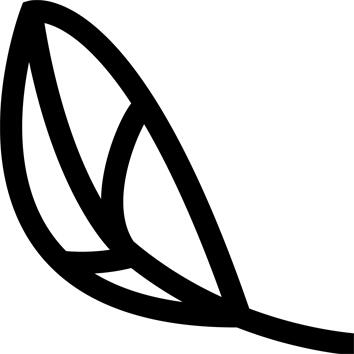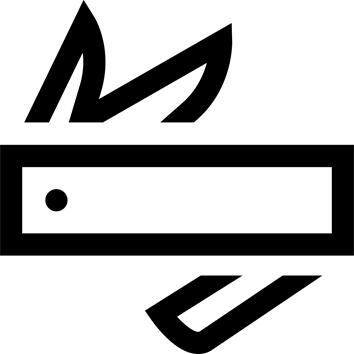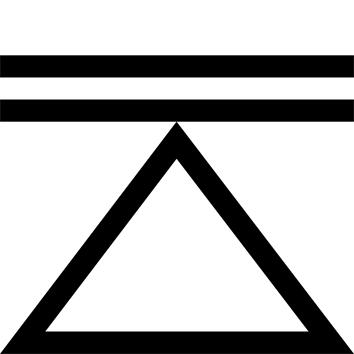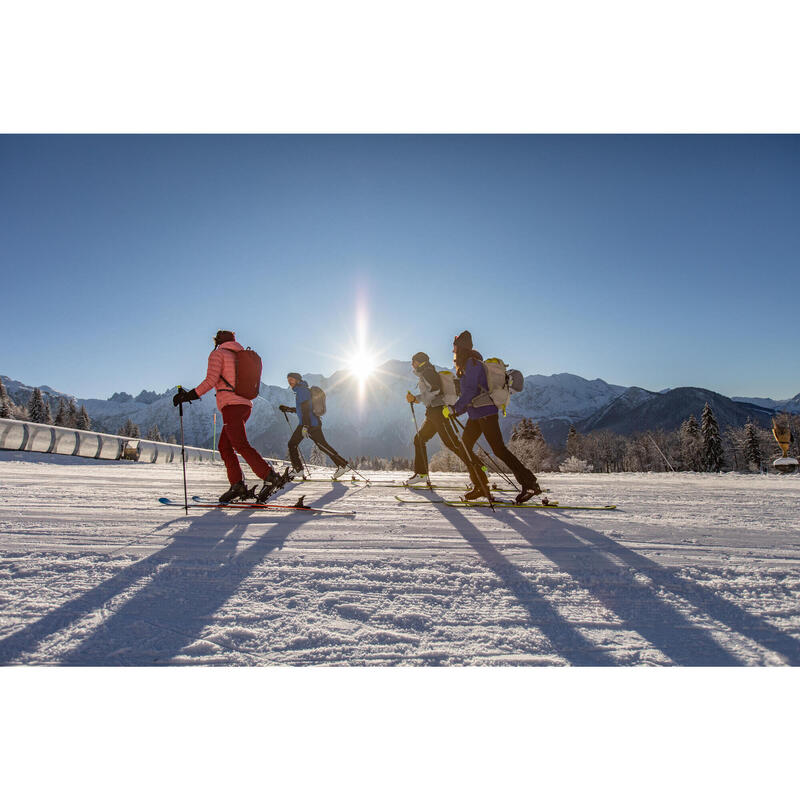Product improvement: addition of skin netting
As of September 2021, and in response to your feedback on our website, we have decided to add a skin net to our touring skis.
To maintain good glue adhesion, we recommend storing the skins on the net.
What is Resort Touring
Resort Touring is our definition of ski touring in ski resorts.
Use the tracks and itineraries marked out by the ski resorts for the ascent, and ski back down to the slopes with ease.
This practice allows you to discover ski touring and learn the technical basics of the sport.
It is also appreciated by sportsmen who want a training track or a defined itinerary to progress easily.
Weight (1single ski)
Bare ski:
150 cm = 1115g
158 cm = 1215g
166 cm= 1315g
174 cm= 1415g
Weight of Tour light binding with leash = 390g
Pack
The RT 500 skis are offered in a pack with Tour Light bindings and skins.
The binding is mounted on a plate that allows the length of the binding to be adjusted by 50mm. This means it can be fitted to a maximum number of foot sizes.
The plate is mounted on a custom-fit plan to suit everyone's needs.
This mounting allows you to lend your skis, change boot sizes, etc.
This is a huge advantage when it comes to introducing people to ski touring.
Skins
The skins offered with the RT 500 skis are cut to the size and width of the ski.
They are made from 70% Mohair and 30% synthetics, the best compromise between glide (on ascents to limit effort) and grip (on ascents to limit the recoil effect).
The skins are fitted with a metal stirrup at the front to attach to most ski tips, and an adjustable camlock at the rear to attach the skin to the ski heel.
Construction
Sandwich wood construction with straight edges.
The wood used is Paulownia, a very light wood that also offers a very soft feel in all snow conditions.
What is a camber?
When a ski is placed on the ground, the contact points of the ski on the snow are located near the tip and tail, while the center of the ski (under the bindings) rises slightly (this is the camber). The longer and higher the camber, the more grippy and responsive the ski. The lower the camber, the more forgiving and maneuverable the ski.
Cambre
The camber on the RT 500 is average, offering a good compromise between handling and grip.
What is a rocker?
On a rocker ski, the tip - and sometimes the tail - lifts off the ground much earlier than on a cambered ski without rocker. This shifts the contact points towards the center of the ski. This shortens the ski's surface area in contact with the snow, giving you more maneuverability and lift in soft snow. The angle of the rocker gives you more edge length for greater grip on hard snow. The longer the rocker, the more maneuverable your ski.
Rocker
The RT 500 has a front rocker and a rear rocker (tip and tail), making it easy to maneuver and pivot on all types of snow.
On piste, this small rocker makes turning the ski effortless.
What does a ski's sidecut correspond to?
The sidecut is characterized by 3 dimensions: tip width, runner width and tail width. The wider the tip, the easier the ski enters the turn. The narrower the runner, the grippier the ski on hard snow. The wider the runner, the more comfortable and stable the ski is in snow changes.
150 cm = 122/78/111 cm Radius = 13.5m
158 cm = 122/78/111 cm Radius = 14m
166 cm= 122/78/111 cm Radius = 15m
174 cm= 122/78/111 cm Radius= 17m
Fastener adjustment length
ski length = 150cm
=> Binding adjustment for boots from 247 to 297mm
ski length = 158 cm
=> Binding adjustment for boots from 257 to 307 mm
ski length = 166 cm
=> Binding adjustment for boots from 267 to 317 mm
ski length = 174 cm
=> Binding adjustment for boots from 287 to 337 mm
How to choose the right ski size?
The shorter the skis, the more maneuverable they are.
This is why beginners should choose shorter skis.
In general, for ski touring, we recommend choosing skis:
from -5cm to -10cm below your height.
The length can also vary according to the terrain:
In resorts, on marked itineraries: from -5cm to -15cm below the skier's height,
In the mountains from 0 to -10cm below the skier's height.










